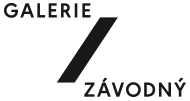Structures and surfaces
Structures and surfaces
Závodný Gallery do not present collective exhibition very often, the exposition “Structures and surfaces„ is one of the few exceptions. Presented artists were chosen for their shared interest in geometric abstraction and similar approach to colours.
There is a strong correlation between the carefully premediated selection of each painting and the architectural space surrounding it. Although the approach to the process of work varies per artist, their consciousness of spatial fundaments creates the common ground for possible dialogues between the exhibited works.
The first group of artists’ works with the basic geometric shapes such as a square, a bisector or a rectangle and large painted surfaces, seemingly approaching the monochrome paintings. The application of one distinctive colour allows a strict definition of the canvas or relief area to the surroundings. Only a close inspection of the painting will allow the viewer to perceive the modulation of the monochrome surface depending on the light and shadows/ R. Wasko /, the rigid system and harmony of successive white prisms on a white background/ K. Staudt/, the steadiness of the coloured surface, which is, like a razor, intersected by a thin line in the opposite tint / J. Kubíček /, or the strength and domination of the canvas area / Antiphon M. Grygar /.
The coloured surface of the paintings, embedded in the architectural space of the gallery building, emphasis the effect on the viewer. The paint is distributed in thin layers, without any visible brush strokes. This very compact surface has a natural but pronounced effect.
The application of elementary geometric nomenclature is characteristic also for the second group of presented artists. Lines, segments of squares or circles reproduced at regular intervals form a structured system on canvases. The final result may evoke op-art structures /V. Vasarely, J. Fajó/, define new dimensions of figures and spaces inside the painting /R. Winiarski/, opens up for countless variants of coloured fields series /J. Grabowski / alternatively forms wave lines from circle segments /M. Dobeš collage/.
This second group is characterized mainly through their premediated concepts setting up the principles for the generation of each particular structure and relief. The painting area is fragmented, its structure is formed by the principle of seriality and repetition. Contrasting colour fields placed one next to the other enhance the relief or the structure of the artwork.
Both groups of artists reveal a systematical approach to their work. The first of them uses predefined rules and further more explore the visual power of coloured surfaces. The second group educe visual illusions, working with the principle of repetition, this groups follows up on the works of op-art founders.
All of the exhibited artist are considered, within the European context, as the leading personalities of geometric abstraction of 20th century / F. Morellet, France, M. Dobeš, Slovakia, G. Alviani, Italy, M. Grygar, Czech Republic, R. Wasko, Germany, R. Winiarski, Poland, J. Grabowski, Poland, V. Vasarely, France, J. Fajó , Hungary, J. Kubíčkk, Czech Republic, K. Staudt, Germany, L. Erb, Germany/.





